TLDR Blue light can help treat skin conditions like eczema and acne without major side effects.
The document "Blue Light in Dermatology" explores the dual nature of blue light (400–500 nm) in dermatological applications, noting its anti-inflammatory and antiproliferative benefits for conditions like acne, psoriasis, atopic dermatitis, and eczema, as well as its potential to promote hair growth by extending the anagen phase of hair follicles. Blue light therapy has shown effectiveness in clinical studies, improving disease severity and quality of life, and demonstrating anticancer properties by inhibiting melanoma cell growth. However, it also poses risks such as oxidative stress, circadian rhythm disruption, and hyperpigmentation. The paper underscores the need for further research to clarify the mechanisms, establish safe treatment protocols, and assess long-term safety.
 70 citations
,
April 2017 in “Lasers in surgery and medicine”
70 citations
,
April 2017 in “Lasers in surgery and medicine” Blue light promotes hair growth by interacting with specific receptors in hair follicles.
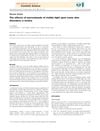 17 citations
,
December 2015 in “International Journal of Cosmetic Science”
17 citations
,
December 2015 in “International Journal of Cosmetic Science” Visible light can improve skin disorders and hair loss, but more research is needed to understand long-term effects.
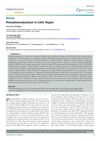 1 citations
,
July 2020 in “Dermatology”
1 citations
,
July 2020 in “Dermatology” Photobiomodulation helps reduce pain, lessen inflammation, heal wounds, and can be used in skin treatments. It also boosts hair growth in women with hair loss and may help fight microbes and prevent respiratory issues in COVID-19.
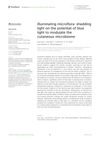 April 2024 in “Frontiers in cellular and infection microbiology”
April 2024 in “Frontiers in cellular and infection microbiology” Blue light might help treat skin conditions by affecting the skin's bacteria.
 August 2025 in “Aesthetic Cosmetology and Medicine”
August 2025 in “Aesthetic Cosmetology and Medicine” Blue light can damage hair and scalp, leading to hair loss.
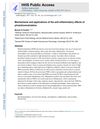 520 citations
,
January 2017 in “AIMS biophysics”
520 citations
,
January 2017 in “AIMS biophysics” Photobiomodulation therapy using red and near-infrared light can reduce inflammation and aid in healing various conditions.
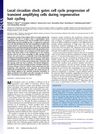 116 citations
,
May 2013 in “Proceedings of the National Academy of Sciences of the United States of America”
116 citations
,
May 2013 in “Proceedings of the National Academy of Sciences of the United States of America” Hair grows faster in the morning and is more vulnerable to damage from radiation due to the internal clock in hair follicle cells.






